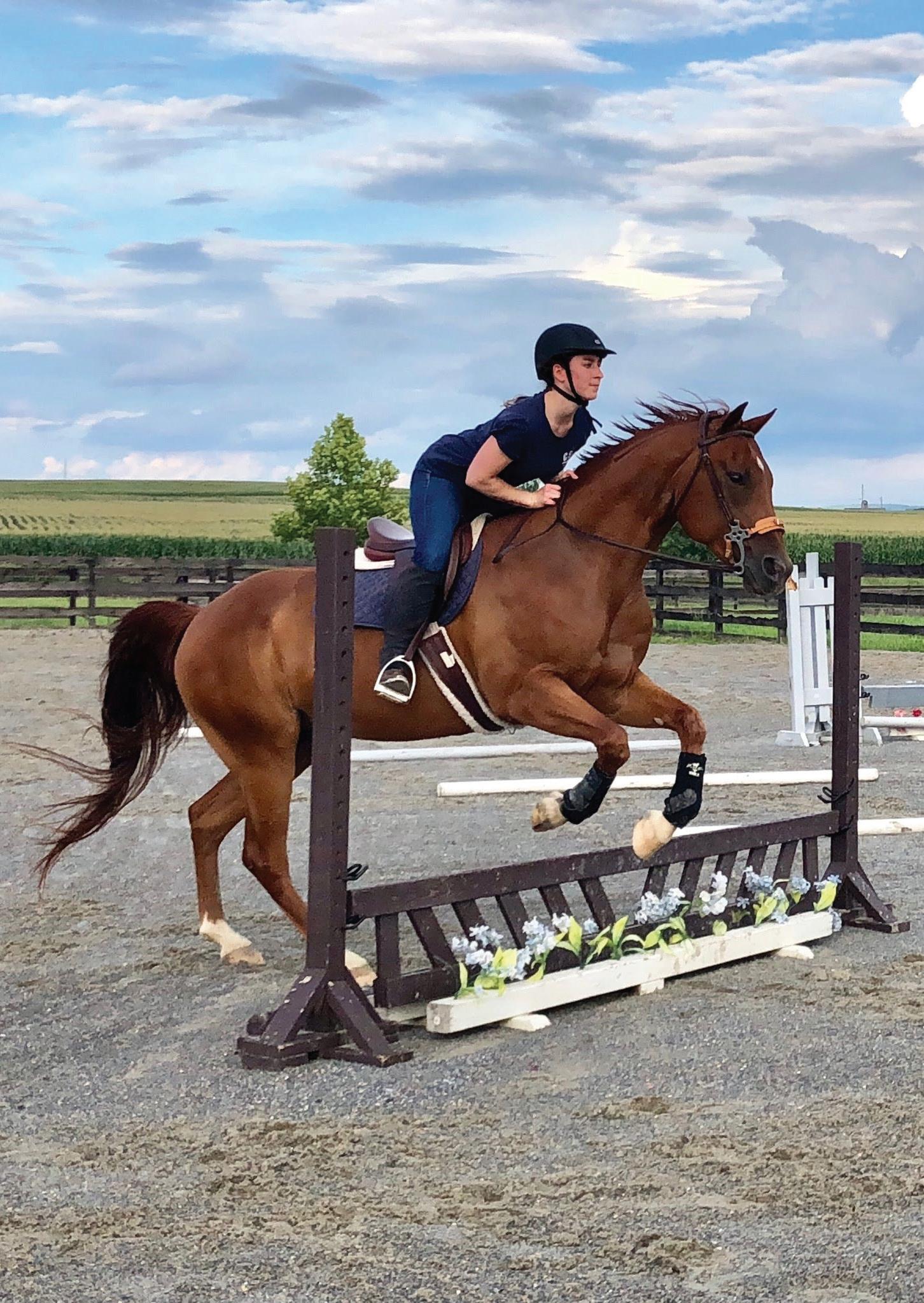
4 minute read
Chelsea’s Story
Chelsea’s Story: A Healed and Grateful Heart after Open-Heart Surgery
The last thing Chelsea Cunningham ever expected was to undergo open-heart surgery. The healthy 26-year-old pharmacist led an active life and took good care of herself.
However, over the two years prior to her 2018 surgery, Chelsea had experienced periodic chest pain and made an appointment with her primary care provider. Her doctor ordered a series of tests: an EKG, chest X-ray, bloodwork, and eventually a seven-day Holter monitor test to measure her heart activity. Nothing significant was found in any of the tests.
As a final step, Chelsea’s doctor wanted her to have a transthoracic echocardiogram (TTE) — a noninvasive test that uses highfrequency soundwaves to create a moving picture of the heart.
“If the TTE was negative, it would have been the end of the story,” says Chelsea. “The intermittent chest pain would have been chalked up to me being my odd self.”
A Diagnosis: Myxoma
The TTE did show an abnormality, and Chelsea was referred to a cardiologist at The Heart Group of Lancaster General Health. Although

the function and structure of Chelsea’s heart were normal, a large, benign tumor known as a myxoma was found in the top left chamber of her heart.
“The cardiologist explained that a myxoma is rare, but as far as heart tumors go, it is one of the most common types,” says Chelsea. “If unaddressed, my future might have included strokes, heart failure, and valve disease.”
Following an additional test that provides better imaging of the heart, doctors determined Chelsea needed open-heart surgery and was referred to cardiothoracic surgeon Dr. Mark Epler.
Preparing for Open-Heart Surgery
Although Epler and all of Chelsea’s doctors assured her she did not have cancer, Chelsea was still in disbelief about what was happening.
She recalls thinking, “This can’t be real. I can’t have a tumor inside my heart. I’m healthy and young. No. This can’t be reality. But it is. This is going to happen. There’s no way around it.”
Epler explained that although Chelsea’s surgery wasn’t an emergency, there were risks to waiting, including stroke and damage to the heart due to the tumor’s size. Her surgery was scheduled.
Epler performed a thoracotomy. During this open-heart surgery, an incision is made in the chest wall between the ribs to access the heart. Everything went exactly as planned, and after the five-hour surgery, Chelsea was on her way to a full recovery. There was no damage to her mitral valve or any other part of her heart.
On to Recovery
Chelsea remembers receiving the customary “heart pillow” to hug firmly when coughing or sneezing.
Chelsea was out of bed and into a recliner chair a few hours after surgery, and a respiratory therapist was on hand to offer post-surgery treatment and equip her with a spirometer for breathing exercises that she would continue at home.
“The idea of getting out of bed that soon was daunting, but I trusted the staff. The goal was always to keep me moving forward,” says Chelsea.
Chelsea is grateful for the kind and skillful care she received in both the ICU and cardiology unit at Lancaster General Hospital.
Epler and other team members from LG Health Physicians Cardiothoracic Surgery stopped by to check on Chelsea the next day. Pleased with her progress, they told her that as long as her pain level remained manageable, she would probably be ready for discharge soon.
“They explained the steps that needed to be taken prior to my being discharged and asked if I had any questions,” says Chelsea. “I had many, and they patiently answered them all.”
Back Home and Back to Work
Back home, Chelsea continued her recovery, at first slowly walking around the house and doing the recommended openheart surgery discharge exercises, as she regained strength and mobility. She followed up with her primary care physician, cardiologist, and surgeon, and began cardiac rehab.
“I was excited to exercise and make another step back to normal,” says Chelsea. “As I walked into their office, I realized it was more like a gym! It gave me a lot of comfort that I’d be hooked up to an EKG the entire time, with the nurses regularly monitoring my rate and rhythm.”
One month after open-heart surgery, Chelsea was back to work part-time.
“In another couple of months, things really started to feel normal again,” recalls Chelsea. “My incisions became scars. I resumed tap dance and horseback-riding lessons and went to my first swing dance since surgery.”
Nearly three years later, Chelsea is doing well, with a healed and thankful heart: “I cannot sufficiently express my gratitude to all of those involved in my care.”
Article courtesy of the Heart & Vascular Institute at Penn Medicine Lancaster General Health.






